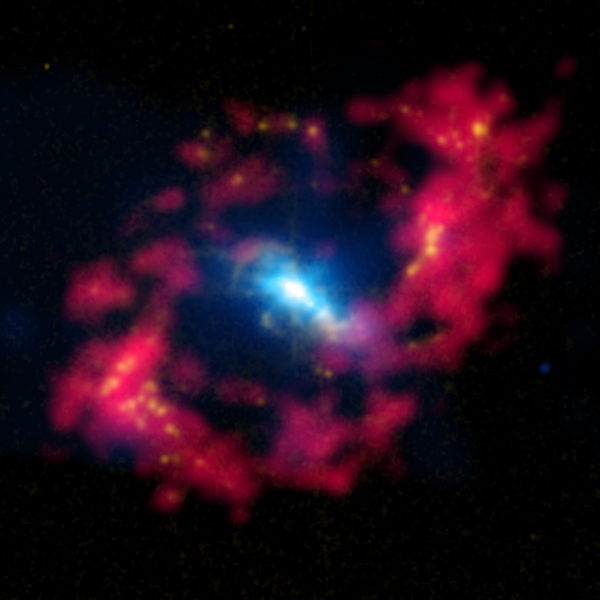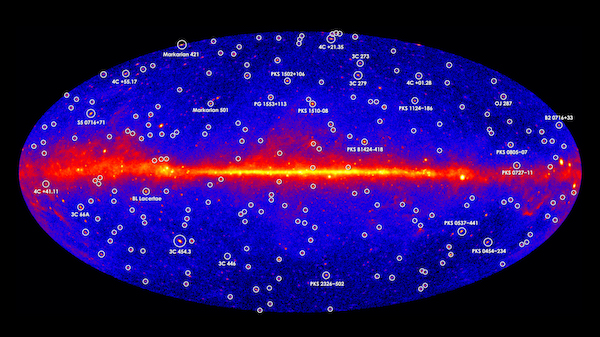Active Galaxies as X-ray and Gamma-ray Sources
Dust and gas at the center of an active galaxy can obscure our optical view of its nucleus. However, if light from other wavelengths can pass through that dust and gas, giving us a glimpse of what's happening at in the bright centers of these galaxies.

X-ray emission from active galactic nuclei have given astronomers many clues about what is going on in these galaxies. Early X-ray observations of AGN showed fairly simple sources that could change brightness over fairly short timescales. Such variability pointed to emission coming from a fairly small area. The rapid changes, high energy output, and small volume all pointed to a black hole accretion powering these galaxies – it is one of the only things that can put out the amount of energy we see from AGN in such a small volume.
Since X-rays originate from very close to the central black hole, X-ray studies give us a unique view of the processes at work in the very center of the action. In some cases, higher energy X-rays have the ability to punch through gas and dust, so this is one part of the electromagnetic spectrum that lets us see into highly obscured AGN.
Like any other massive object, black holes can pull in matter that ventures too close. If there is enough infalling matter, it can form an accretion disk. This disk of matter surrounds the black hole and heats up, emitting X-rays. As matter makes its final plunge into the black hole, it is accelerated to high velocity, causing X-ray emission. Some of the infalling matter can also be funneled away from the black hole in powerful jets along the rotation axis of the disk. These jets are observed across the entire electromagnetic spectrum.
One of the most remarkable trends in gamma-ray astronomy in recent years has been the emergence of high-energy gamma-ray quasars as an important component of the gamma-ray sky. In fact, in its first seven years of operation, the Fermi Gamma-Ray Space Telescope detected over 1,000 active galaxies, most of which are blazars. At gamma-ray energies, these active galaxies are bright; they are highly variable at all energies. Unlike the Seyfert type AGN, most of these sources are preferentially detected at high energies. These must be the most powerful particle accelerators in the universe to produce such strong emission at such high energies.

Text Updated: December 2016
Additional Links
- Quiz me about this topic
- Cool fact about this topic
- FAQs on galaxies
- FAQs on quasars and active galaxies
- Give me additional resources


